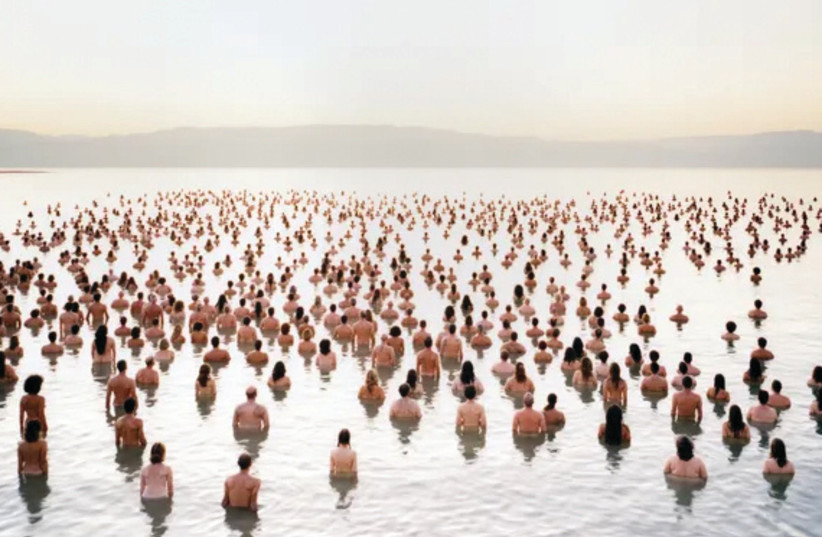Photographer Spencer Tunick spoke at a press conference on Tuesday morning in Jerusalem about his upcoming installation in Arad on October 17 and his current show at the virtual Dead Sea Museum, as well as plans to build a physical Dead Sea Museum in that city.
Tunick, who is well-known for his photographs featuring large groups of nude people, has worked in Israel twice before, both times in the Dead Sea area, and is happy to be back again. “I just enjoy the multi-diverse culture in the country, I’m just honored to be here for the third time, to make art for myself that hopefully brings attention to the city [of Arad] and the museum and to work with the kind and generous participants who are going to pose this weekend.”
He was joined at the event by Ari Leon Fruchter, the founder of the Dead Sea Museum, Nisan Ben-Hamo, the mayor of Arad and the architects who are designing the museum, Sharon Neuman and Iftah Hayner.
Asked if he had been criticized for his decision to work in Israel, Tunick said, “I have many many different people from all different walks of life participating in my work... The only place in the Middle East right now where I can do my art is in Israel. If I was invited by a museum or institution in Egypt to do a work in front of the Pyramids, I would take that opportunity without even thinking about it. But invitations are few and far between, if not none, to work in the Middle East except in Israel.”
Ben Hamo said that he wanted the museum to be a gateway from the Negev to the Dead Sea and to draw tourists back to Arad.

Asked about opposition from religiously observant Arad residents to having Tunick work there because of the nudity, Ben-Hamo said that, “We live in a democracy where everyone can have their opinions. Arad is a liberal, pluralistic city... By the way, as mayor, I see the diverse communities as an advantage because you learn how to respect and you learn how to live together... Yes, we had some pushback and I had to explain what exactly the purpose is. First and foremost, it’s art, it’s a great artist, it’s Spencer Tunick. It’s a great honor that he chose Arad for this,” he said, adding that he had met with members of all the groups that opposed the shoot. “We had a debate on whether it’s art and freedom of speech... The majority like the idea and support it.” He said that the museum would become a cultural center for the region that would attract visitors: “This is a strategic project for us.” With each visit by Tunick, Ben-Hamo said, “There is less and less pushback and more and more people understand the importance of his work.”
Fruchter, talking about how difficult it was to bring Tunick back to create another installation during the pandemic, recited the “shehechyanu” Jewish prayer for special occasions to celebrate the fact that he had pulled it off. He and the architects displayed plans for the physical museum, which he said he hoped would encourage “the preservation of the Dead Sea for future generations.”
Giving a tour of the virtual exhibit, Tunick pointed out some photos he took on his last visit and spoke about how huge sinkholes had appeared between his 2011 visit to Israel and his trip here to photograph five years ago. Speaking about a photograph he took on his last visit where the models were half-hidden in sand, he said, “I wanted to connect the photograph to the situation with the sinkholes and bring attention to this man-made situation.”
